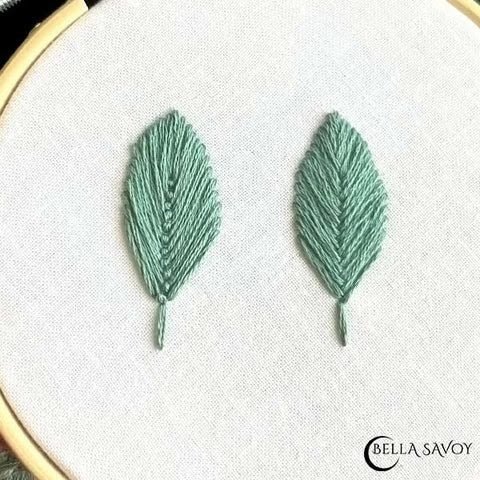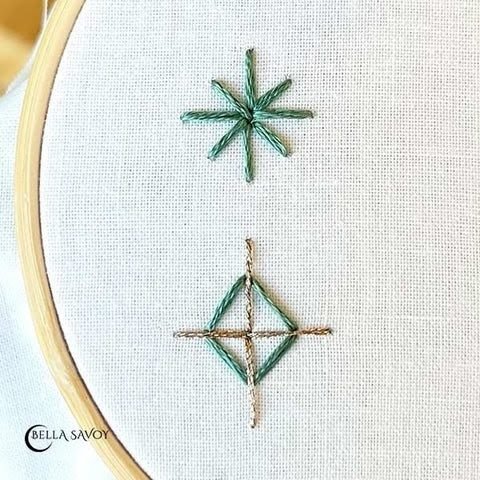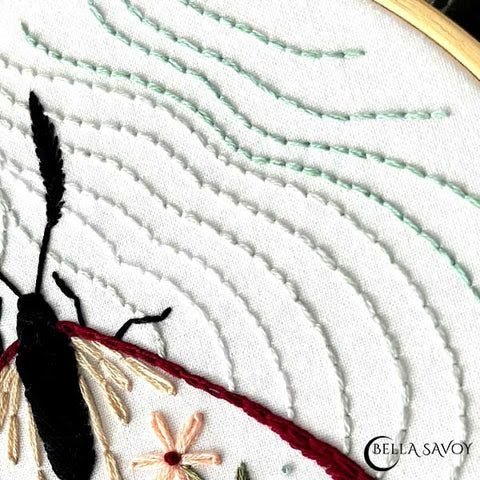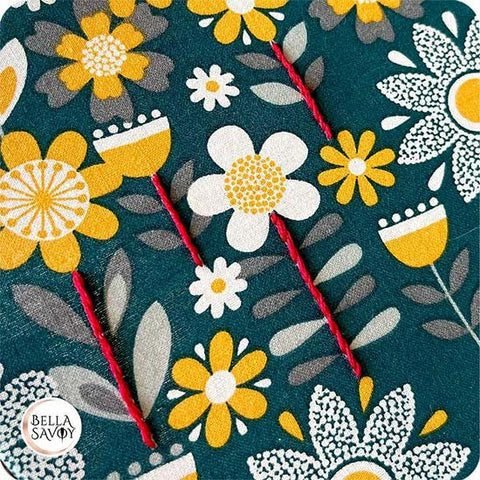
🖤 Learn how to stitch the stem stitch & outline stitch to create nice bold lines that have a rope-like twist and work beautifully for flower stems, vines, and so much more!
These basic embroidery stitches create a clean rope-like line, making them perfect for creating bold outlines and design elements like flower stems, vines, and leaves. These stitches provide a clean, smooth finish and are a great alternative to the chain stitch, which is also a popular outline stitch (and can double as a fill stitch) when you don’t want that typical chain look.
While mainly used for outlines, these stitches are also versatile enough to be used as fills, adding an interesting texture to your projects. Whether you’re working on a floral design or intricate patterns, the stem stitch and outline stitch help bring a unique depth and texture to your embroidery. These are essential for creating clean, crisp lines in your work, making them an excellent choice for any embroidery project you’re tackling!
Table of Contents
These two stitches both twist and the difference is that they twist in opposite directions. The outline stitch twists to the left and the stem stitch twists to the right. The methods to creating them are also very similar, and there’s actually more than one way to make them. I started off with method 1 but now I mainly use method 2. Both are good to learn and I’ll show you two methods so you can try them both and decide which you like better.
For both stitches I’ll work them in a vertical direction in this tutorial.
The Outline Stitch:
Method One
- Draw a guideline running vertical if you’d like. This will be your stitch line.
- Start with a loose stitch and set it to the left of your stitch line.
- Come up between the loose stitch along the stitch line and pull the needle through.
- You can tighten up your loose stitch first before pulling the needle all the way through if you’d like, but it’s an optional step.
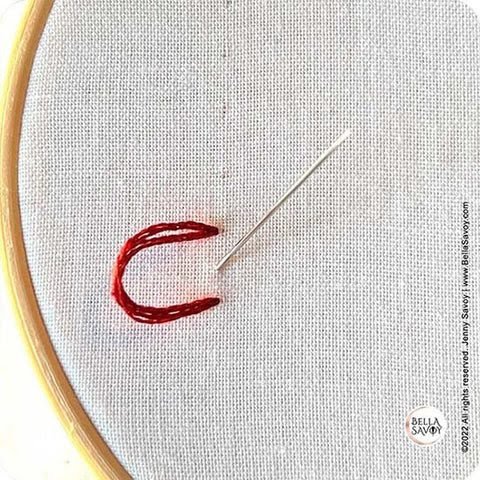
- Next, return to the back a stitch length away (A) to create another loose stitch.
- Set your loose stitch over to the left.
- Then come up at the end of your previous stitch (B) and pull needle through.
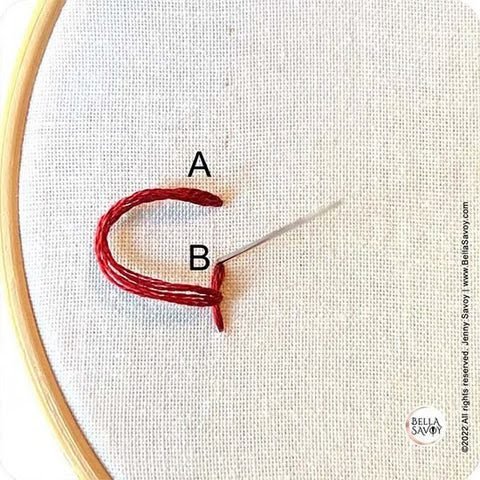
Repeat steps and end your stitch by pushing your needle through the very end of your stitch. Notice how the outline stitch twists to the left.
Method Two
Method 2 reminds me a lot of the back stitch but when you go back you do so a little differently.
- Start with a small stitch
- Come up a stitch length away.
- Nudge the previous stitch over to the left and return to the back along the stitch line.
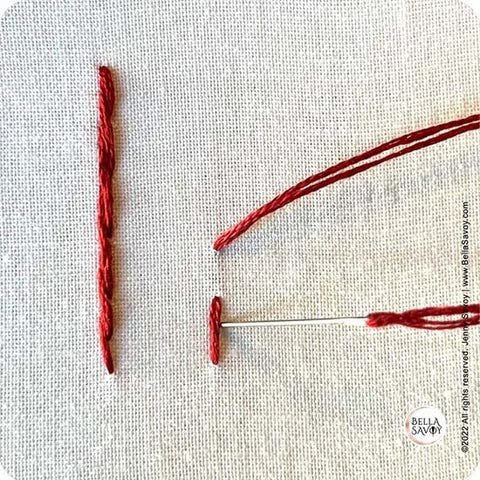
Repeat steps then finish off the stitch by coming up at the very end of the stitch and returning to the back between the last stitch.
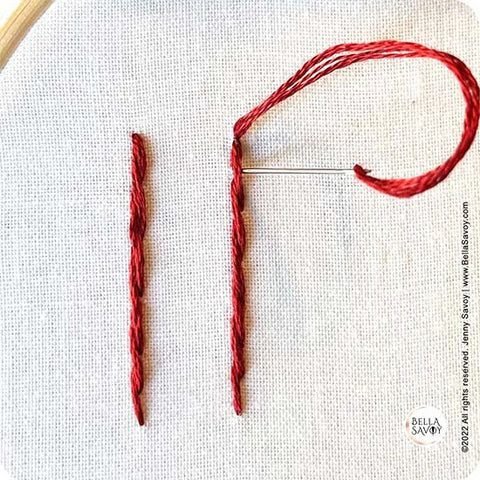
Stem Stitch:
Method One
- Again, I’ll make the stitch line run up and down.
- Make a loose stitch along the vertical stitch line and push it aside to the right.
- Bring the needle up in the middle of the stitch along the stitch line, then pull through.
- Repeat and finish by returning to the back at the end of the stitch, just as it was done with the outline stitch.
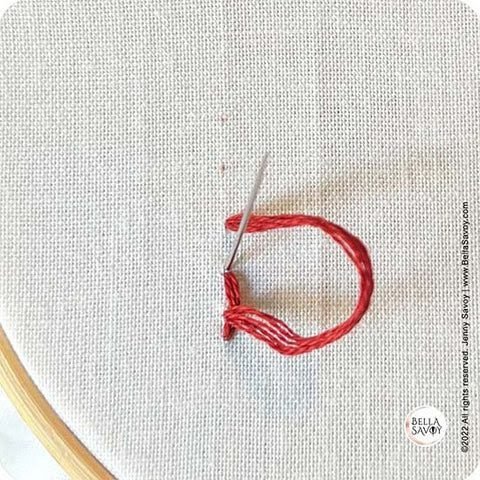
Method Two
- Make a small stitch.
- Leave a small gap and come up.
- Return to the middle of the previous stitch, nudge it over to the right and return to the back.
- Repeat steps then finish off the stitch by coming up at the end of your stitch and return to the back between the last stitch, just like it was done in the outline stitch.

Breakdown:
Let’s break down the differences!
If your OUTLINE STITCH:
- Runs vertical, your needle will always be to the right of the thread.
- Runs horizontal, your needle will always be below the thread.
- This is true in both methods. Just remember, the needle will be either to the right or below the thread.
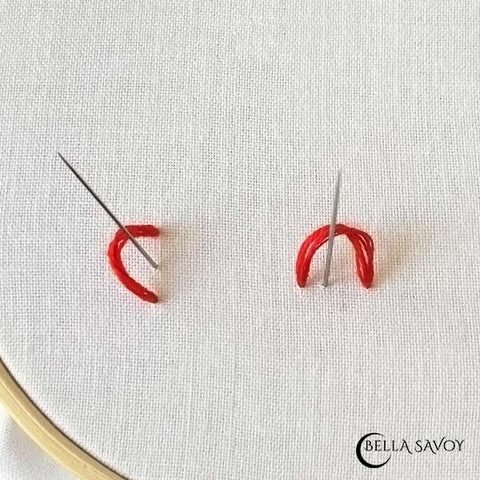
If your STEM STITCH:
- Runs vertical, your needle will always be to the left of your thread.
- Runs horizontal, your needle will always be above your thread.
- This is true in both methods, and in this case remember, the needle will be either to the left or above the thread.

When it comes to creating a curve or curved shape, you’ll end up with a much smoother result if your stitches are smaller. If your stitches are too large for your curve it can give your stitch a sloppy appearance.
Video Tutorial
As always, I’ve included a video tutorial:

